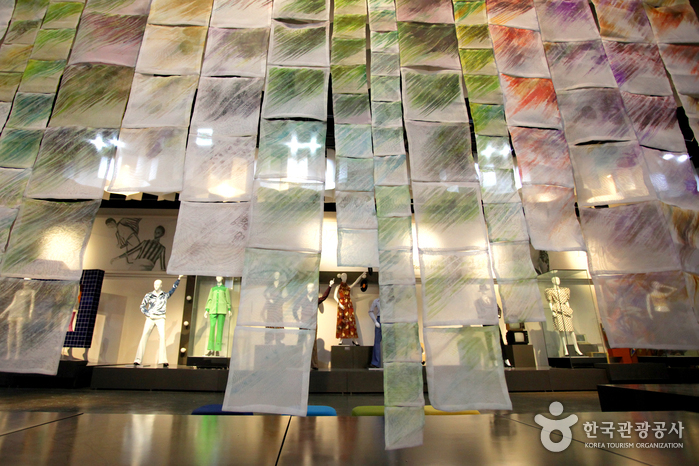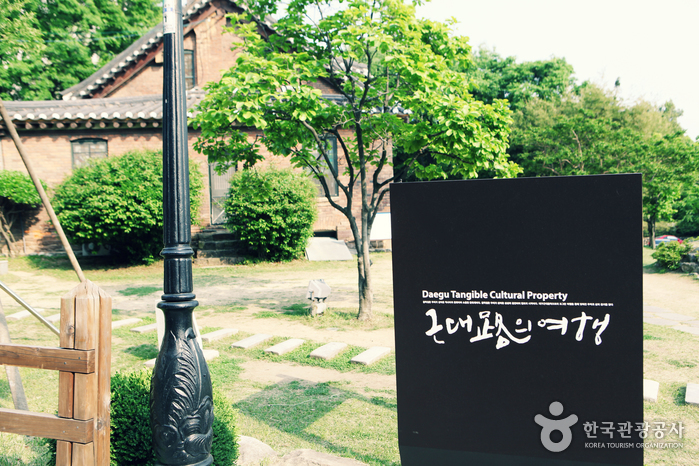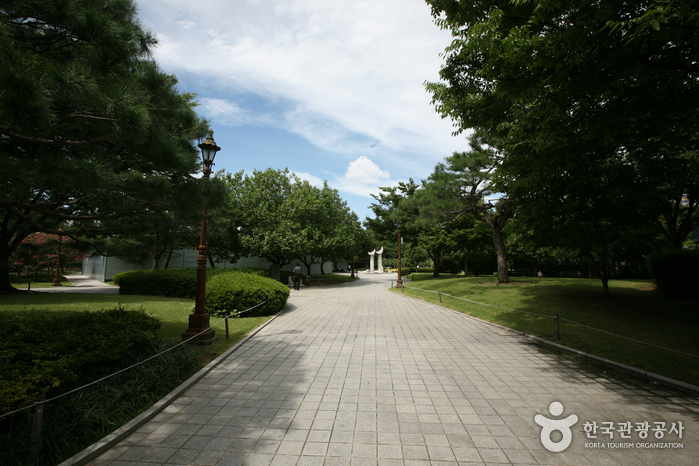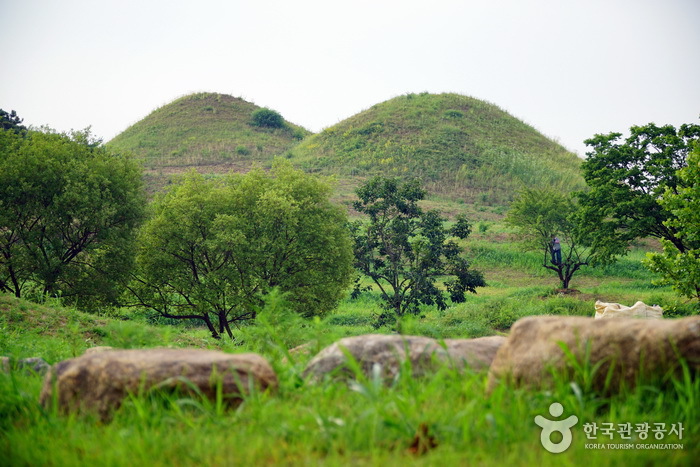Ace - Daehyun Primall Daegu Branch [Tax Refund Shop] (에이스 대현프리몰대구)
3.4Km 2024-04-27
B580 Gukchaebosang-ro, Jung-gu, Daegu
-
Bottari - Daehyun Primall Daegu Branch [Tax Refund Shop] (보따리 대현프리몰대구)
3.4Km 2024-04-19
B580 Gukchaebosang-ro, Jung-gu, Daegu
-
Daegu Textile Museum (대구섬유박물관)
3.4Km 2021-03-17
227, Palgong-ro, Dong-gu, Daegu
+82-53-980-1004
Located in Daegu, a city famous for textiles, Daegu Textile Museum is the nation's sole textile musuem. Visitors can learn about the history of fashion, textiles, and related industries through the exhibition halls. The children's experience hall displays clothing from around the world, and offers various hands-on programs and special exhibitions for an informative and fun experience.
ABC-Mart - Daegu Dongseong-ro 2(i)-ga Branch [Tax Refund Shop] (ABC마트 대구동성로2가점)
3.4Km 2024-04-22
40, Dongseong-ro, Jung-gu, Daegu
-
Artbox - Daegu Jungang Branch [Tax Refund Shop] (아트박스 대구중앙)
3.4Km 2024-04-18
39, Dongseong-ro, Jung-gu, Daegu
-
Daegu Modern History Streets (Tour of Modern Streets) (대구 근대골목(근대로의 여행))
3.4Km 2023-10-27
66, Gukchaebosang-ro 102-gil, Jung-gu, Daegu
+82-53-661-3327
Daegu Modern History Streets is an experiential tour that brings the participants across Daegu’s alleyways and living history. During the Korean War, Daegu was much less damaged than other regions. Because of that, the city retains the changes in lifestyles before and after the war relatively well.
There are 13 courses in total, run by regional self-governance groups in Daegu, defined according to different themes and areas. The most popular among them is Course 2, the Modern Cultural Street, which takes visitors on a tour of major sites associated with Daegu’s modernity. Follow the retro aesthetics and the history of Daegu and Korea along places like Kyesan Catholic Church, Jeil Church, old houses, and the former Chinese Elementary School.
Note that multilingual tours are offered to international visitors in English, Japanese, and Chinese, in regular tours (14:00 every Saturday) and on-demand tours (available for groups of more than 5). Reservations are offered on the official website.
Gyeongsanggamnyeong Park (경상감영공원)
3.4Km 2018-08-07
99, Gyeongsanggamyeong-gil, Jung-gu, Daegu
+82-53-254-9404
Located in central Daegu, Gyeongsanggamyeong Park was built during the 34th year of King Seonjo of the Joseon Dynasty (1601) and was the original location of Gyeongsanggamyeong (1910), the office of the Gyeongsangbuk-do governor. In 1965 the provincial office was moved to another location and the park opened its doors to the public under the name of Central Park. The park was renamed again in 1997 and has been known as Gyeongsanggamyeong Park ever since.
Many cultural and historical heritages are located in the park including the Seonhwa-dang building where the governor worked (Daegu Tangible Cultural Property No.1); the Jungcheong-gak building that was one of the governor’s residences (Daegu Tangible Cultural Property No.2); and Seonjeong-bi gravestone where governor’s achievements are engraved. Seonhwa-dang building in particular has historical significance since it is one of the few remaining government buildings.
The park is well loved by citizens for its green forest, beautiful flowers, well-developed grass plaza, scenic fountain area, and its comfortable walking paths.
Hottracks - Daegu Branch [Tax Refund Shop] (핫트랙스 대구점)
3.4Km 2024-04-23
586, Gukchaebosang-ro, Jung-gu, Daegu
-
Ancient Tombs in Bullo-dong (대구 불로동 고분군)
3.4Km 2021-06-15
Bullo-dong, Dong-gu, Daegu
+82-53-662-4103
About 200 tombs are located on a hillock in Bullo-dong, Dong-gu near Geumhogang River. The Ancient Tombs in Bullo-dong, which have been designated as Historic Site No. 262, were formed during the Three Kingdoms Period. It is speculated to be a mass burial site of all those who settled and controlled this region during ancient times.


![ABC-Mart - Daegu Dongseong-ro 2(i)-ga Branch [Tax Refund Shop] (ABC마트 대구동성로2가점)](http://tong.visitkorea.or.kr/cms/resource/45/2884045_image2_1.jpg)
![Artbox - Daegu Jungang Branch [Tax Refund Shop] (아트박스 대구중앙)](http://tong.visitkorea.or.kr/cms/resource/22/2884022_image2_1.jpg)


![Hottracks - Daegu Branch [Tax Refund Shop] (핫트랙스 대구점)](http://tong.visitkorea.or.kr/cms/resource/34/2884034_image2_1.jpg)

 English
English
 한국어
한국어 日本語
日本語 中文(简体)
中文(简体) Deutsch
Deutsch Français
Français Español
Español Русский
Русский